Enora Le Flao
Toward more accurate and generalizable brain deformation estimators for traumatic brain injury detection with unsupervised domain adaptation
Jun 08, 2023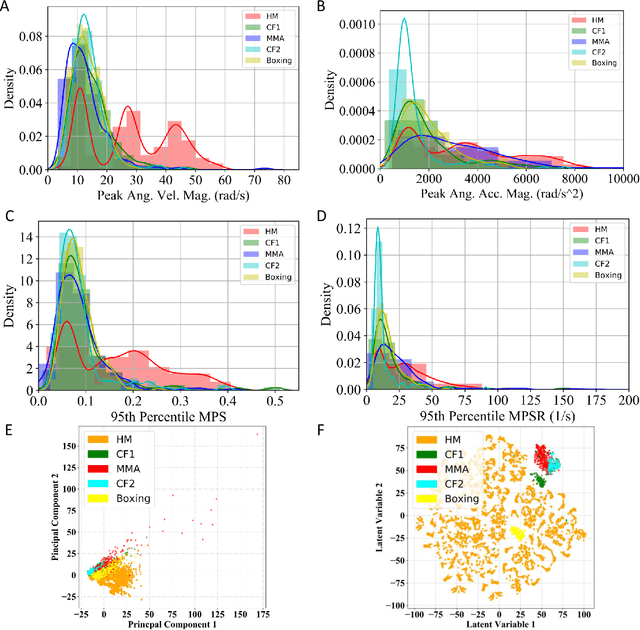
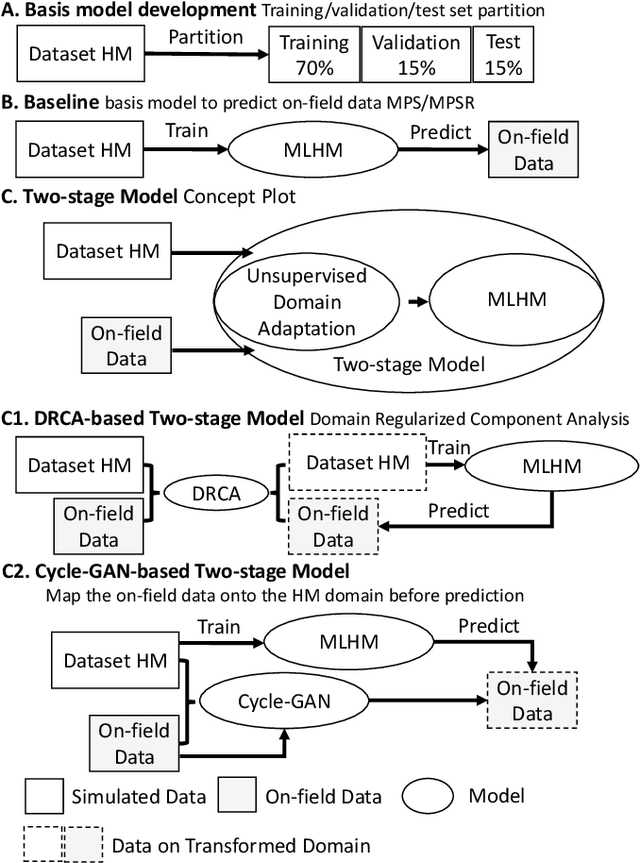
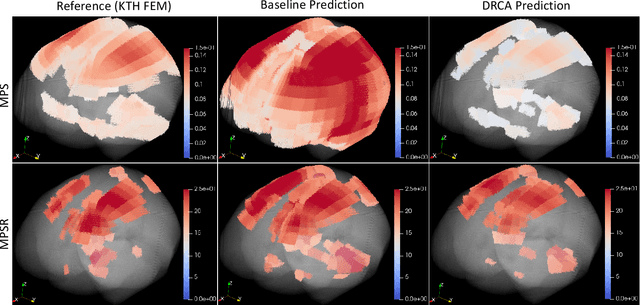
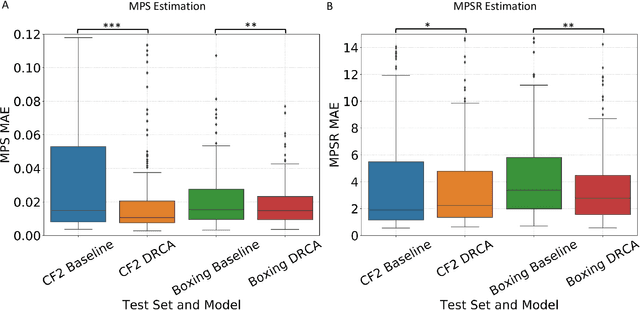
Abstract:Machine learning head models (MLHMs) are developed to estimate brain deformation for early detection of traumatic brain injury (TBI). However, the overfitting to simulated impacts and the lack of generalizability caused by distributional shift of different head impact datasets hinders the broad clinical applications of current MLHMs. We propose brain deformation estimators that integrates unsupervised domain adaptation with a deep neural network to predict whole-brain maximum principal strain (MPS) and MPS rate (MPSR). With 12,780 simulated head impacts, we performed unsupervised domain adaptation on on-field head impacts from 302 college football (CF) impacts and 457 mixed martial arts (MMA) impacts using domain regularized component analysis (DRCA) and cycle-GAN-based methods. The new model improved the MPS/MPSR estimation accuracy, with the DRCA method significantly outperforming other domain adaptation methods in prediction accuracy (p<0.001): MPS RMSE: 0.027 (CF) and 0.037 (MMA); MPSR RMSE: 7.159 (CF) and 13.022 (MMA). On another two hold-out test sets with 195 college football impacts and 260 boxing impacts, the DRCA model significantly outperformed the baseline model without domain adaptation in MPS and MPSR estimation accuracy (p<0.001). The DRCA domain adaptation reduces the MPS/MPSR estimation error to be well below TBI thresholds, enabling accurate brain deformation estimation to detect TBI in future clinical applications.
Denoising instrumented mouthguard measurements of head impact kinematics with a convolutional neural network
Dec 19, 2022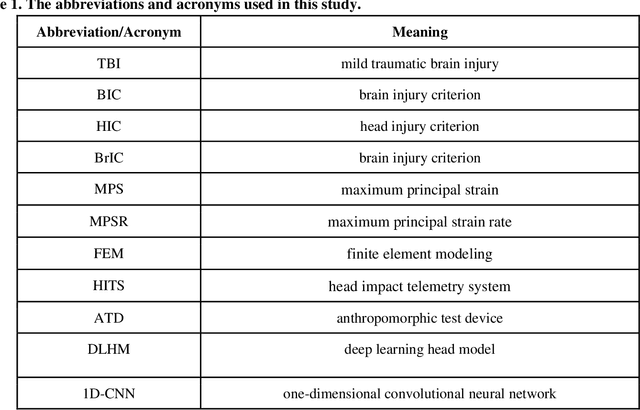
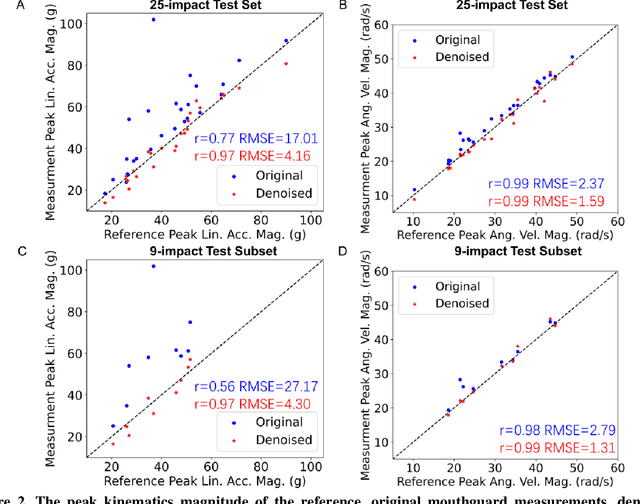
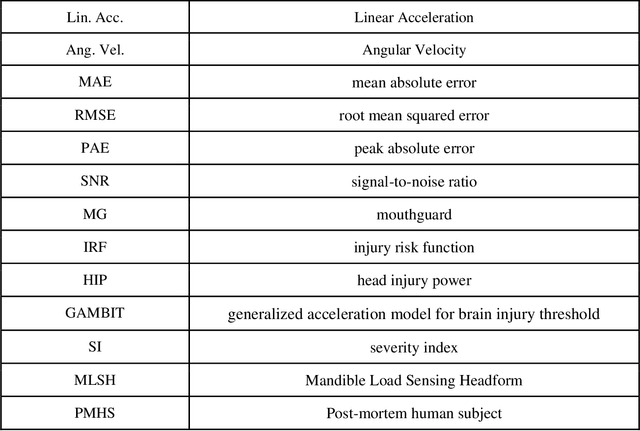
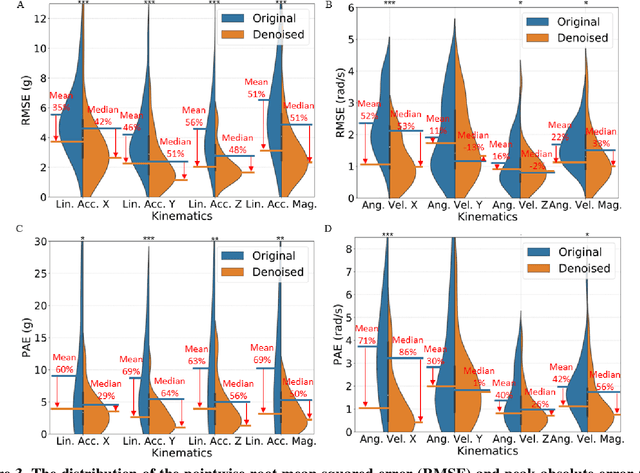
Abstract:Wearable sensors for measuring head kinematics can be noisy due to imperfect interfaces with the body. Mouthguards are used to measure head kinematics during impacts in traumatic brain injury (TBI) studies, but deviations from reference kinematics can still occur due to potential looseness. In this study, deep learning is used to compensate for the imperfect interface and improve measurement accuracy. A set of one-dimensional convolutional neural network (1D-CNN) models was developed to denoise mouthguard kinematics measurements along three spatial axes of linear acceleration and angular velocity. The denoised kinematics had significantly reduced errors compared to reference kinematics, and reduced errors in brain injury criteria and tissue strain and strain rate calculated via finite element modeling. The 1D-CNN models were also tested on an on-field dataset of college football impacts and a post-mortem human subject dataset, with similar denoising effects observed. The models can be used to improve detection of head impacts and TBI risk evaluation, and potentially extended to other sensors measuring kinematics.
 Add to Chrome
Add to Chrome Add to Firefox
Add to Firefox Add to Edge
Add to Edge